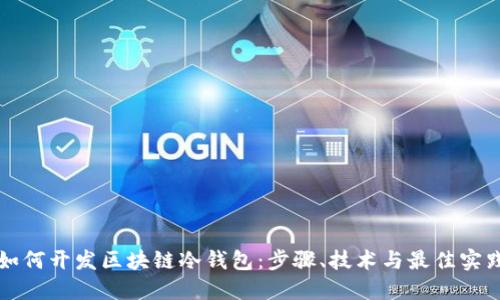## 内容主体大纲1. 引言 - 电子钱包的兴起与发展 - EP钱包的背景介绍2. EP数字钱包的特点 - 安全性 - 便捷性 - 多样化服...
随着数字货币的兴起,越来越多的人开始关注如何安全地存储自己的资产。在众多存储方式中,冷钱包因其出色的安全性而受到青睐。
#### 1.1 什么是冷钱包冷钱包是指一种离线存储数字货币私钥的方法,通常不与网络连接,因而可以有效防止黑客攻击。它适用于长时间持有或大额资产存储,是一种安全的重要手段。
#### 1.2 冷钱包的重要性在数字货币交易中,安全性始终是用户最为关注的因素之一。冷钱包通过将私钥保存在离线环境中,可以极大地降低资金被盗的风险,确保用户资产的安全。
### 2. 冷钱包的基本概念 #### 2.1 冷钱包与热钱包的区别热钱包是在线存储私钥的方式,方便快速交易,但安全性相对较低。而冷钱包则是将私钥离线保存,虽然不那么方便,但其安全性非常高。
#### 2.2 冷钱包的工作原理冷钱包的基本工作原理是在用户需要进行交易时,将相关数据(如交易信息)传递至计算机或设备进行签名,签名完成后再将其发送至区块链网络。
### 3. 开发冷钱包的步骤 #### 3.1 确定需求和功能在开发冷钱包之前,首先需要明确目标用户及其需求,包括存储什么类型的数字资产、支持哪些功能等。
#### 3.2 选择合适的技术栈根据需求选择合适的编程语言和框架,通常Python、JavaScript、Go等都是不错的选择。
#### 3.3 设计用户界面用户界面应,方便用户操作,同时也需考虑安全性设计
#### 3.4 实现安全机制如多重签名、加密存储和冷藏设备等,能够增强冷钱包的安全性。
### 4. 技术实现 #### 4.1 选择合适的区块链平台根据项目需求,选择支持的区块链平台,如比特币、以太坊等,并了解其相应的API文档。
#### 4.2 公钥和私钥生成公钥和私钥的生成方式决定了用户资产的安全性,采用高强度的随机数生成算法是重要的技术指标。
#### 4.3 交易签名与验证在进行交易时,必须对交易请求进行签名。而后其他节点在网络中对其进行验证,确保交易有效性。
### 5. 用户体验 #### 5.1 界面设计最佳实践用户界面设计时需考虑用户的操作习惯,尽量减少复杂操作,并提供详细的使用说明。
#### 5.2 用户管理及支持冷钱包应提供完善的用户管理功能,包括用户反馈机制和常见问题解答,提升用户满意度。
### 6. 安全性考虑 #### 6.1 常见安全威胁包括网络攻击、物理盗窃以及用户误操作等,理解这些威胁为安全设计提供基础。
#### 6.2 加密技术在冷钱包中的应用使用对称加密和非对称加密相结合的方式,提供合理的安全保障。
### 7. 测试与发布 #### 7.1 冷钱包测试的重要性测试是确保冷钱包安全性的关键步骤,包括功能测试、安全测试等。
#### 7.2 持续更新与用户支持在冷钱包发布后,需要不断进行技术更新与版本迭代,此外建立用户支持帮助其解决问题。
### 8. 未来趋势 #### 8.1 冷钱包的发展方向随着技术的发展,冷钱包将会朝着更安全、更便捷的方向发展,集成更多智能功能。
#### 8.2 自主开发与外包选择的比较冷钱包开发的选择自主研发还是外包需要综合考虑团队技术水平和项目的实际需求。
## 9. 问题解答 ### 9.1 如何确保冷钱包的安全性?冷钱包的安全性直接关系到用户资产的安全,确保安全性首先需要选择优质的硬件和软件。其次,合理实施多重签名和加密技术。同时,用户在使用冷钱包时也应关注自己的操作习惯,不随意公开私钥,并注意网络环境,确保访问的安全。
在硬件层面,可以选择专用的冷钱包设备,如Ledger、Trezor等。而软件层面,使用开源的计算库,并经常更新以防止安全漏洞。
### 9.2 冷钱包的用户体验如何?User experience is crucial for cold wallets. First and foremost, the interface must be user-friendly and intuitive. Design should focus on minimizing clicks and streamlining the process for transactions, backups, and recovery. Providing a step-by-step guide can alleviate user anxiety related to security.
Further, integrating customer support within the wallet is highly beneficial. For instance, live chat support or a comprehensive FAQ section can significantly enhance user experience. Regular updates based on user feedback can also help refine functionality, making it easier for users to interact with their cold wallets.
### 9.3 开发冷钱包需要多大的技术投入?The technical investment required for developing a cold wallet can vary greatly depending on the complexity of the wallet and the desired features. A basic wallet could require a small team with expertise in blockchain technology, cryptography, and software engineering. However, a more advanced wallet that integrates complex security protocols may necessitate a larger investment in skilled personnel and possibly external consultants.
In conclusion, thorough planning is essential. Establishing clear specifications and doing market research before starting development can help ensure that resources are allocated effectively and that the final product meets user needs without unnecessary expenditure.
### 9.4 如何处理冷钱包中的资产遗失问题?Asset loss in cold wallets can be devastating, hence it’s crucial to implement strategies to mitigate risks. First, user education on the importance of keeping recovery phrases or backup securely stored is essential. This includes explaining what recovery phrases are, how to create them, and where to store them.
Furthermore, enhancing the wallet's restore functionalities can provide users with a clear path to recovery in case they misplaced their access. For instance, some wallets allow users to set up secondary recovery options or use biometric authentication for underground recovery phases.
### 9.5 冷钱包的市场需求及前景如何?The demand for cold wallets is expected to grow as cryptocurrency adoption increases. As more people invest in digital currencies, the need for secure storage solutions will also rise. Current market trends indicate a shift toward providing more user-friendly, multifaceted cold storage solutions besides traditional hardware wallets.
Additionally, institutional clients are beginning to explore cold wallets as part of their crypto asset management strategies. This trend bodes well for the development of more sophisticated and high-capacity cold wallets, geared towards both retail and institutional investors.
### 9.6 未来冷钱包的发展方向是什么?Looking forward, cold wallets will likely evolve with advancements in technology, including artificial intelligence and machine learning to enhance security protocols. Moreover, integration with decentralized finance platforms could pave the way for hybrid wallets that offer both security and accessibility.
Meanwhile, ensuring compliance with regulations will be a governing factor in the development of future wallets, especially as governments increase oversight over digital assets. Therefore, building compliance features into wallet designs from the outset will be crucial.
这篇文章旨在为想要开发区块链冷钱包的开发者提供全面的指导,从基础知识到具体实施,帮助他们顺利完成开发项目并提高产品的市场竞争力。
